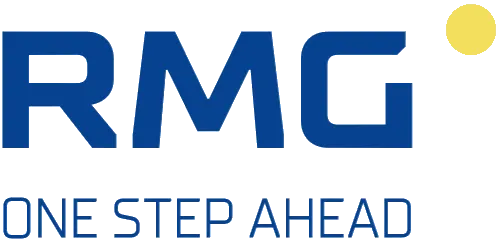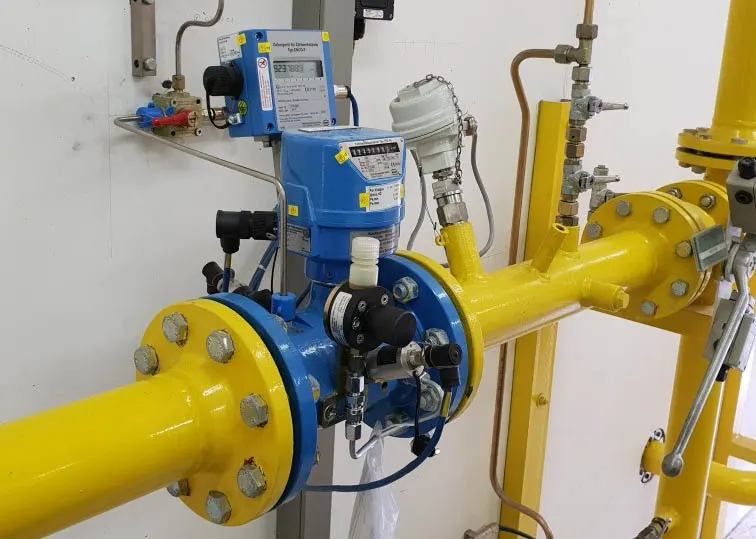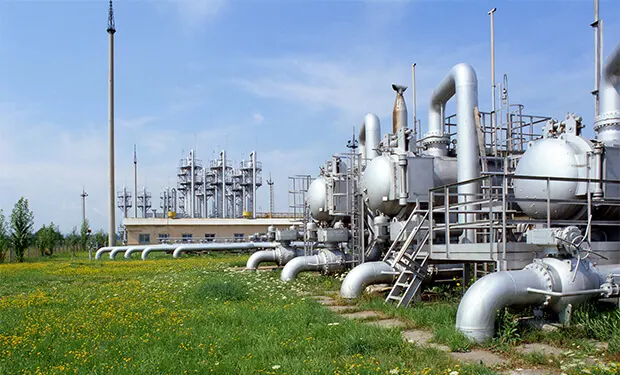Gas Measurement Solutions
Do you have a simple or complex gas system and want to measure the gas quantitatively and/or qualitatively? We have the right gas measurement systems for you. Be it a new greenfield plant or a modernization/extension of an existing plant.
RMG offers you a customized system solution that takes into account and complies with the applicable standards (ATEX, MID, DVGW, VDE, ...). Whether for operational or custody transfer applications, RMG develops the best possible gas measurement system for its customers from its extensive product range to meet the needs of the modern gas industry.
Starting with sampling probes, pulse line piping, pressure reduction, gas chromatography, measuring sections consisting of inlet/outlet sections with gas meters (TRZ, USZ), electronic volume correctors, control cabinets with various components, data storage, data transmission through to the integration of third-party devices into the overall system.
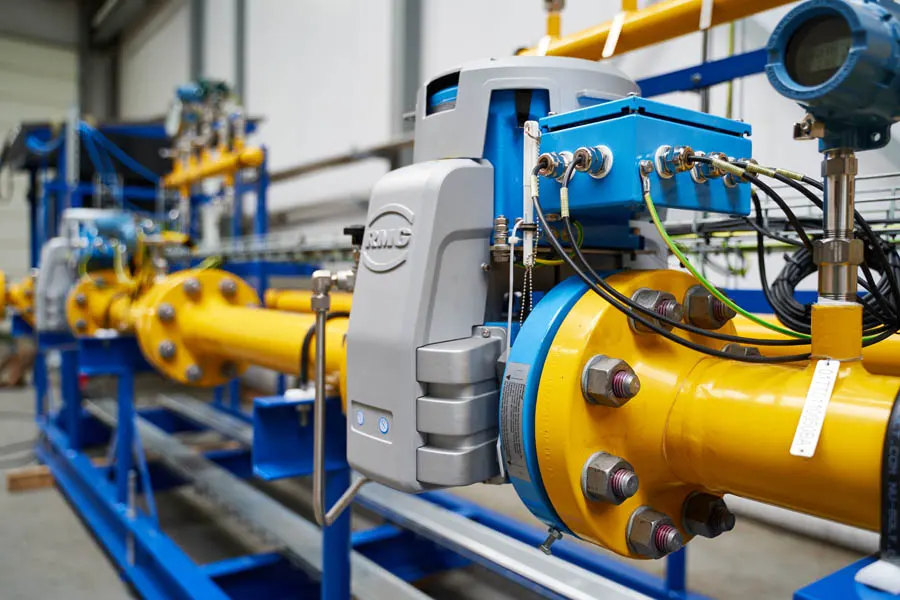
Gas Quantity Measurement
Customized solutions with scalable device setup, designed for your capacities and requirements.
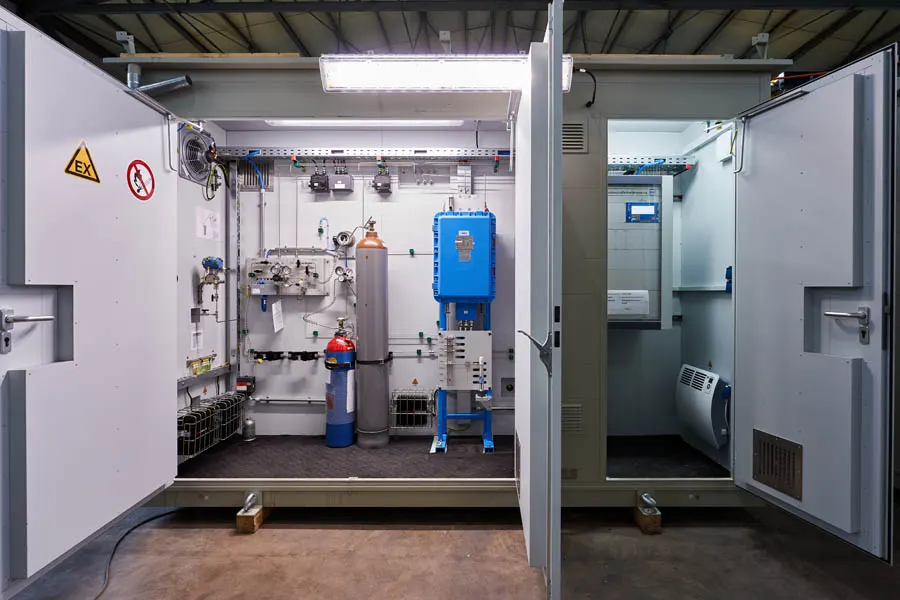
Gas Quality Measurement
Highly accurate composition measurement, fully integrated, proven in tough conditions and optimized for permanent availability.
RMG Solutions for accurate Measurement
RMG offers you the complete range of products and services for your system. Benefit from our know-how combined with the individual RMG components, which can be integrated harmoniously into your environment. This is how you get the best quality, perfectly matching and coordinated.
The main features at a glance
- Individual adoption to your needs and requirements
- Up to ANSI CLASS 2500
- Up to DN 1000
- All onshore locations, outside installation including harsh environments
Gas Measurement Solutions are used to exactly determine the gas quantity per timeframe and/or the gas composition by volume. A system normally contains multiple modules or subsystems which are scaled and designed to best fit the purpose and deliver the most accurate as well as reliable result. As an example, Turbine Meters, Ultrasonic Meters or Rotary Meters are commonly used to measure gas quantity, a Gas Chromatograph will be used to determine the gas composition instead. Alltogether the results will allow the precise calculation of transmitted energy within your system.
Architecture of a Metering Solution
An implementation concept usually starts with the standard quantity measurement principle, equipped with optional multilevel redundant flow conversion devices - Flow Computers or electric volume converters - combined with Gas Quality Measurement Devices from RMG or an equivalent 3rd Party. All traceable integrated and documented with process documentation and design concepts. Regardless which size or equipment you aim for, RMG will build the bridge between all aspects and take care of a consistent and seamless integration of our scope. All together for a variety of customers, from regional gas suppliers, transportation system owners, gas storage operators, engineering procurement and construction companies up to industrial clients.
Based on your requirements, we will provide you with a specified and customized offer. This will include but is not limited to:
Based on your requirements, we will provide you with a specified and customized offer. This will include but is not limited to:
- Participation in FEED and Tender Phases
- On-Site Assessments of installed systems
- Consulting
- Design and Engineering
- Project Management and Execution
- Order Processing, including on site Services such as
- Installation and Start-up
- Cold/Hot-Commissioning
Individual components of our Gas Measurement Solutions
Various types of gas meters are available for gas volume measurement. They are necessary to bill the consumption of the gas. In industry, they are also used for monitoring processes where the exact gas volume is important. Variants of gas meters are rotary piston meters, turbine meters, ultrasonic meters, vortex gas meters, Coriolis meters. They differ in terms of size, area of application and measuring range. Their operating principles are sometimes very different, as these examples show:
Turbine meter for custody transfer measurements determine the volume flow through a rotating turbine measuring wheel, the number of revolutions of which is proportional to the operating volume that has flowed through.
Ultrasonic meter determine the change of ultrasonic waves with a changed flow velocity of the gas. The gas volume is calculated from this change in the sound frequencies.
Electronic volume correctors are used to determine the gas volume flow in the standard state using the results measured in the operating state. They are necessary because different temperatures and pressures can prevail in the operating state and also changing in the course of the process, but the billing of the gas is based on the energy content of the gas volume in the standard state. Among other things, sulphur and dew point measuring instruments are used in gas measuring systems to determine the gas quality.
Sulfur meters:
These instruments are used for measuring sulphur in the trace range because natural or refinery gas often contains sulphur compounds that cause malodour. In addition, they are corrosive and therefore damage the equipment. In some cases, high purity is also required of the gas, for example when used in laboratories and in the agricultural and food industry. High demands are placed on sulphur measuring instruments because of the difficulty of detecting sulphur compounds on different surfaces.
Dew point meters:
The dew point of a gas is also decisive for its passage and processing. Dew point measuring instruments determine the dew point and also the relative humidity (stated in percent) or the concentration of humidity (stated in ppm). Other measured values are the ambient temperature and the pressure in the measuring range. Technical applications can be found in gas utilities, in the petrochemical industry, power generation, medicine and pharmaceuticals, biotechnology, environmental technology and the processing of industrial gases.
Turbine meter for custody transfer measurements determine the volume flow through a rotating turbine measuring wheel, the number of revolutions of which is proportional to the operating volume that has flowed through.
Ultrasonic meter determine the change of ultrasonic waves with a changed flow velocity of the gas. The gas volume is calculated from this change in the sound frequencies.
Electronic volume correctors are used to determine the gas volume flow in the standard state using the results measured in the operating state. They are necessary because different temperatures and pressures can prevail in the operating state and also changing in the course of the process, but the billing of the gas is based on the energy content of the gas volume in the standard state. Among other things, sulphur and dew point measuring instruments are used in gas measuring systems to determine the gas quality.
Sulfur meters:
These instruments are used for measuring sulphur in the trace range because natural or refinery gas often contains sulphur compounds that cause malodour. In addition, they are corrosive and therefore damage the equipment. In some cases, high purity is also required of the gas, for example when used in laboratories and in the agricultural and food industry. High demands are placed on sulphur measuring instruments because of the difficulty of detecting sulphur compounds on different surfaces.
Dew point meters:
The dew point of a gas is also decisive for its passage and processing. Dew point measuring instruments determine the dew point and also the relative humidity (stated in percent) or the concentration of humidity (stated in ppm). Other measured values are the ambient temperature and the pressure in the measuring range. Technical applications can be found in gas utilities, in the petrochemical industry, power generation, medicine and pharmaceuticals, biotechnology, environmental technology and the processing of industrial gases.
Application example for Gas Measurement Solutions
A typical Gas Measurement Solutions, which is very common in practice, consists of a gas meter with a sulphur measuring device and a volume corrector. The gas meter can be an ultrasonic meter for the large consumption range, as used by industry or gas suppliers. In addition to this gas meter, the sulphur measuring instrument for checking the purity and a volume corrector are added.
In the network, small temperature deviations and pressure fluctuations can occur. The volume corrector corrects the measured values to the standard conditions. We supply all components for a gas measuring system and also prepare planning documents. In addition, we install Gas Measurement Solutions, put them into operation for the first time and provide the necessary support.
In the network, small temperature deviations and pressure fluctuations can occur. The volume corrector corrects the measured values to the standard conditions. We supply all components for a gas measuring system and also prepare planning documents. In addition, we install Gas Measurement Solutions, put them into operation for the first time and provide the necessary support.
Areas of Application
Whether transported through pipelines or kept in storage facilities - RMG develops the concept for your fiscal and non-fiscal gas measurements application:
- Gas meters for exact gas measurement
- Flow computers for conversion and calculating of measured values
- Gas chromatographs for gas composition determination
- Measurement and evaluation software for data collection, device access, archiving, reporting and maintenance
Do you have any questions about our
Gas Measurement Solutions
Feel free to contact us if you have any questions or need help. Our staff is always there for you.
